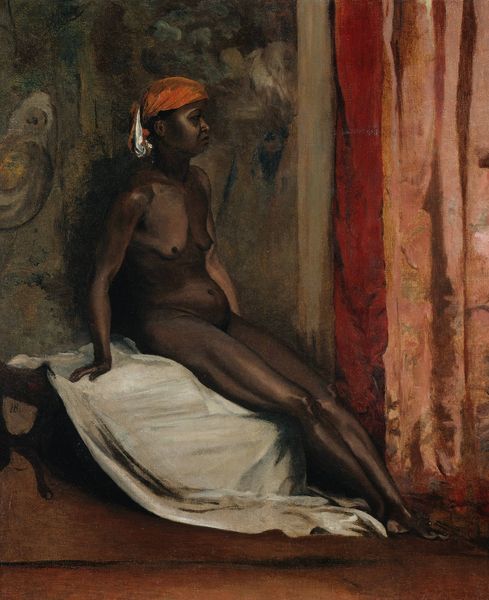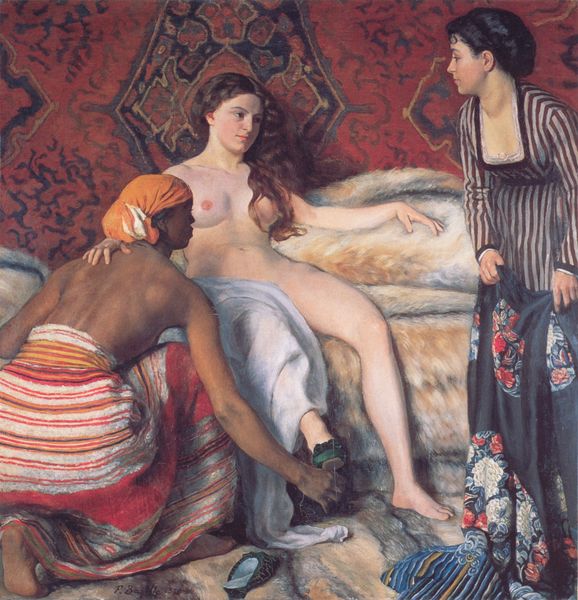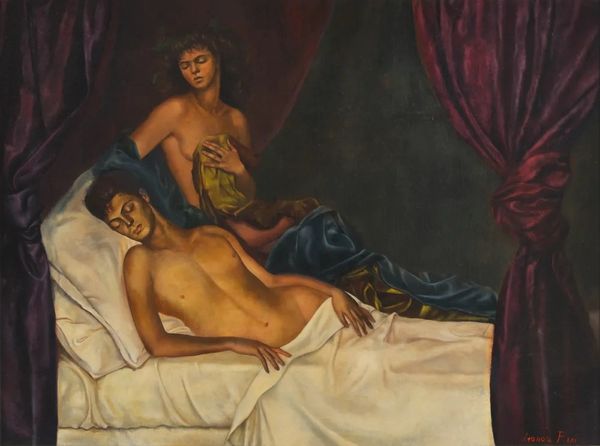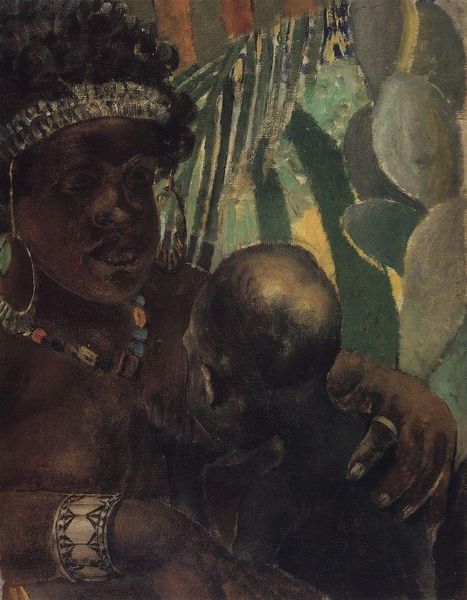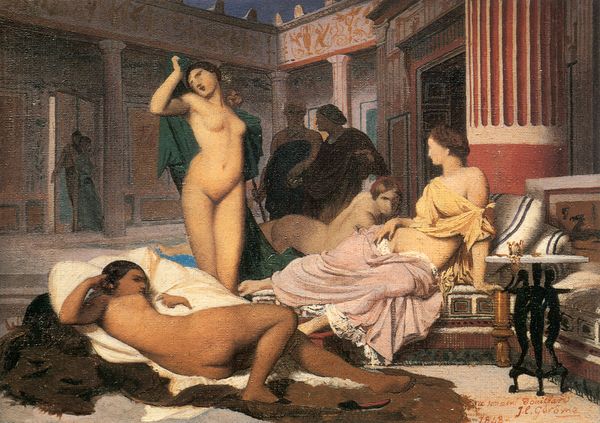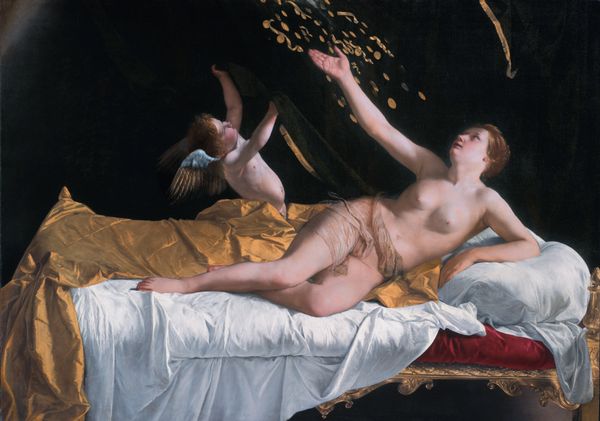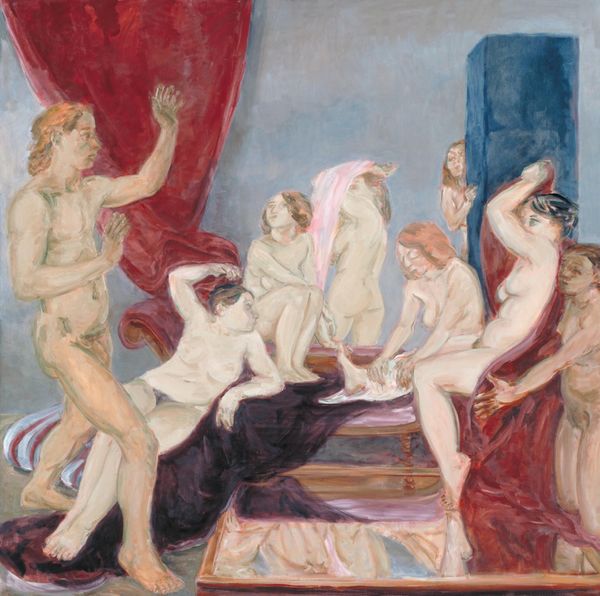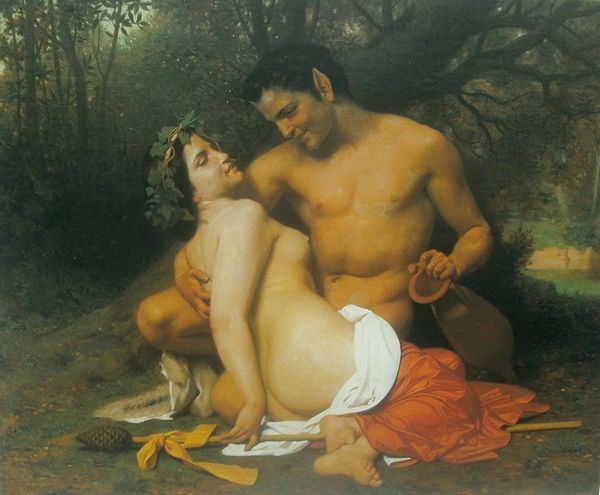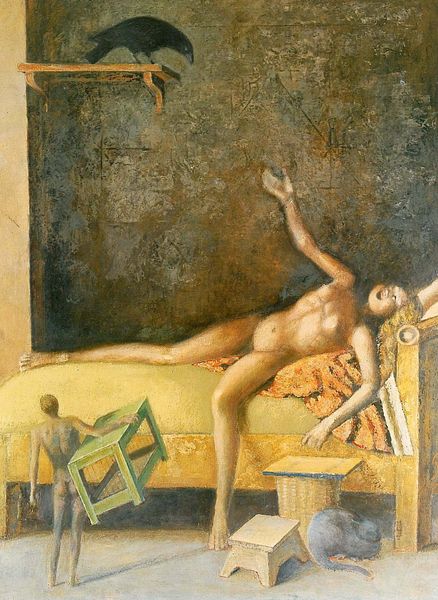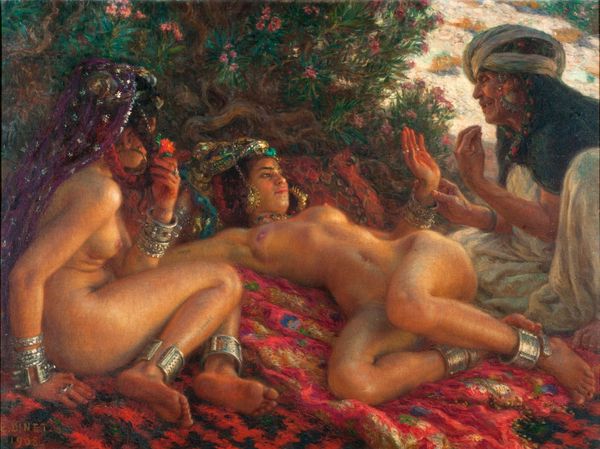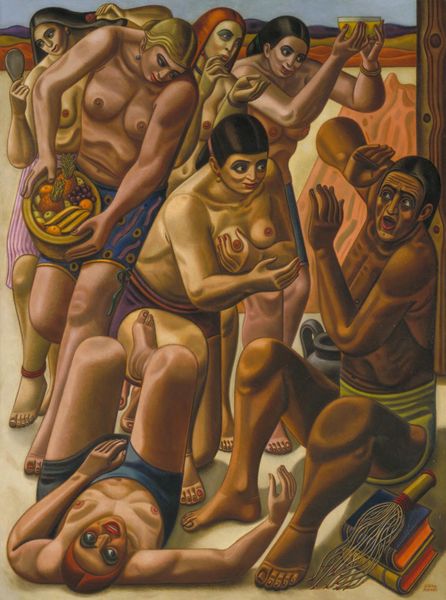
oil-paint
#
portrait
#
contemporary
#
oil-paint
#
figuration
#
oil painting
#
portrait art
#
realism
Copyright: Harmonia Rosales,Fair Use
Editor: This is Harmonia Rosales's 2019 oil painting, "Beauty." There’s something very classical about the composition and lighting, but the subjects feel very modern. What jumps out at you? Curator: The deployment of color, undoubtedly. Rosales leverages the contrast between the figures' skin tones, punctuated by the surprising iridescence of the peacock plumage, to establish a complex visual rhythm. Observe how the deep blues and greens of the backdrop create a spatial recession, drawing the eye deeper into the composition. Editor: The gold leaf is also really striking, scattered across their skin like embellishments. Is it symbolic, or purely decorative? Curator: Precisely. The gold functions on multiple levels. It's a textural element, introducing a tactile dimension to the painted surface. It is also a semiotic marker— a signifier of value, perhaps alluding to the intrinsic worth of the depicted figures, whose gaze disrupts art historical tropes. Note, too, how it fractures the smooth planes of their bodies. How does this scattering change our reading of form and content? Editor: I see what you mean. It breaks up the expectation of idealized bodies, pushing us to consider them as individuals, not just figures. Curator: The figures also lack clear narrative context. It disrupts the conventions of traditional portraiture by shifting away from direct mimesis. Did you notice any particular brushstrokes on the painting, or specific patterns of the golden flakes? Editor: It seems intentional, even chaotic. At the top of my mind is that the gold may connote natural beauty of chaos. Curator: Yes, I couldn’t agree more. Paying attention to visual techniques has deepened our perception of the painting’s composition. Editor: Absolutely! Seeing beyond just the image and analyzing how it's structured is so important.
Comments
No comments
Be the first to comment and join the conversation on the ultimate creative platform.
